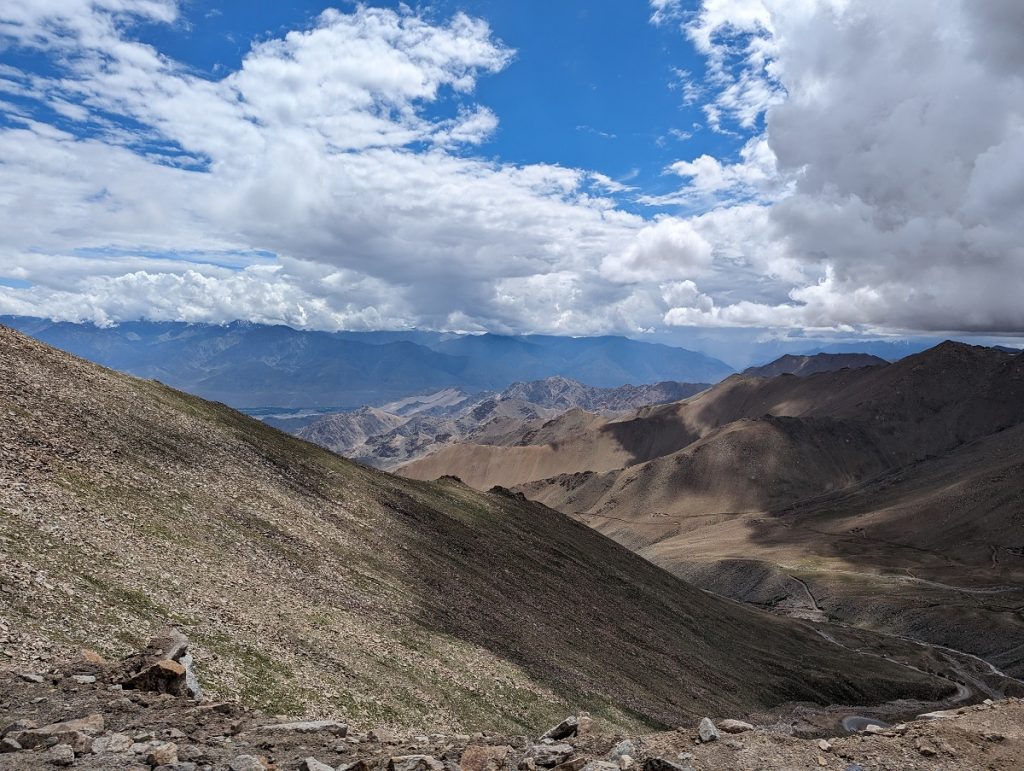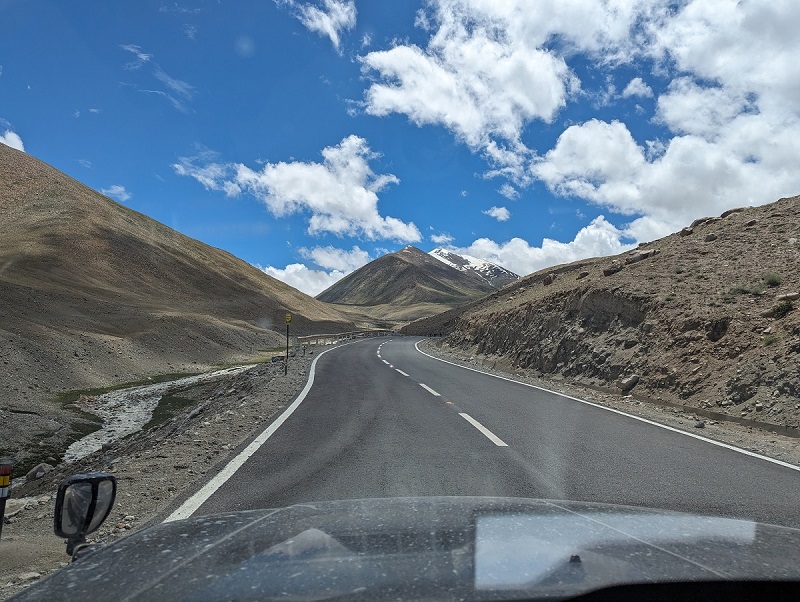
As I observed and marvelled at the way climate change had become a stark reality there was a huge commotion “Bhaago bhaago (run run)!” someone shouted, “the flow has increased! Run!”

“Arrey yaar! Network aa hi nahi raha hai! (oh man there is no network)” groaned Saurabh, my colleague as we started our journey from Turtuk to Leh. The 200 km journey is amongst the most scenic roads I have been on. I was relying on his mobile hotspot since even with two sims I was disconnected; I had a prepaid Airtel sim (prepaid doesn’t work in Ladakh) and a postpaid Jio sim (the Turtuk region doesn’t have Jio towers). The past week had been a throwback to my school days when I used to keep my mobile data off and switch it on when required. We were using the Internet when required instead of as a luxury. Instagram scrolling had reduced; Outlook and Gmail had taken over a higher percentage of my screen time.


As we walked from our guest house till the car parking I kept prodding Saurabh to check his phone and see if he got the network. As we sat in the car our man at the wheel Ali Hussain announced “there will be no network today; it rained last night.” Ali was well-prepared; he had already downloaded his favourite songs so that he wouldn’t need to rely on the Internet. As Arijit Singh played in the background I enjoyed the views of the vast desert and mountains around. I don’t enjoy being a passenger but Ali’s driving skills were a treat to witness. I got to take videos on what I would now call a notepad and camera since the lack of connectivity had limited the potential of my phone.
Coasting along the beautiful road I felt like I was leaving this place before I wanted to. The encapsulating beauty would make all visitors yearn for more. However, I was shocked when my yearning turned into reality. About 60 km into our journey we approached a long line of cars and trucks. We stopped and instinctively, the first thing I did was to check if we had network; still no luck. I stepped out of the car and walked ahead to see what the traffic was all about. “Looks like we’ll be here for another two hours,” said a father to his children. “Someone will come to clear it,” said a driver to the passengers in his bus. After crossing about 20-25 cars, buses and trucks I reached the source of what all of them were discussing. There was a river flowing on the road. There used to be a road there till 3 hours back and now a stream had taken over.
As I observed and marvelled at the way climate change had become a stark reality there was a huge commotion “Bhaago bhaago (run run)!” someone shouted, “the flow has increased! Run!” I ran back to the car and Ali quickly turned it around and we sped off with the other cars. Everyone slowed down after a couple of hundred meters. It was a false alarm. Once again all the cars turned around and stood in line. Ali very confidently overtook the rest of the cars and went right to the front of the line. I could only imagine what would happen if someone did this in Delhi- road rage would have taken over and the driver would have been thrashed. As we reached the front we saw a group of 6-7 drivers huddled together. As soon as they saw Ali approaching they exclaimed “Ali bhai has come! Great! Ali bhai, please start, make the way for us and we will follow.” Ali Hussain was no ordinary taxi driver; he was well-known in the region for his skill. He humbly smiled and got down from the vehicle. He walked a few steps ahead, inspecting the flow of the stream and the state of the road. Then he came back to the car and said “should we go? There are enough people to pull us out if we get stuck.”
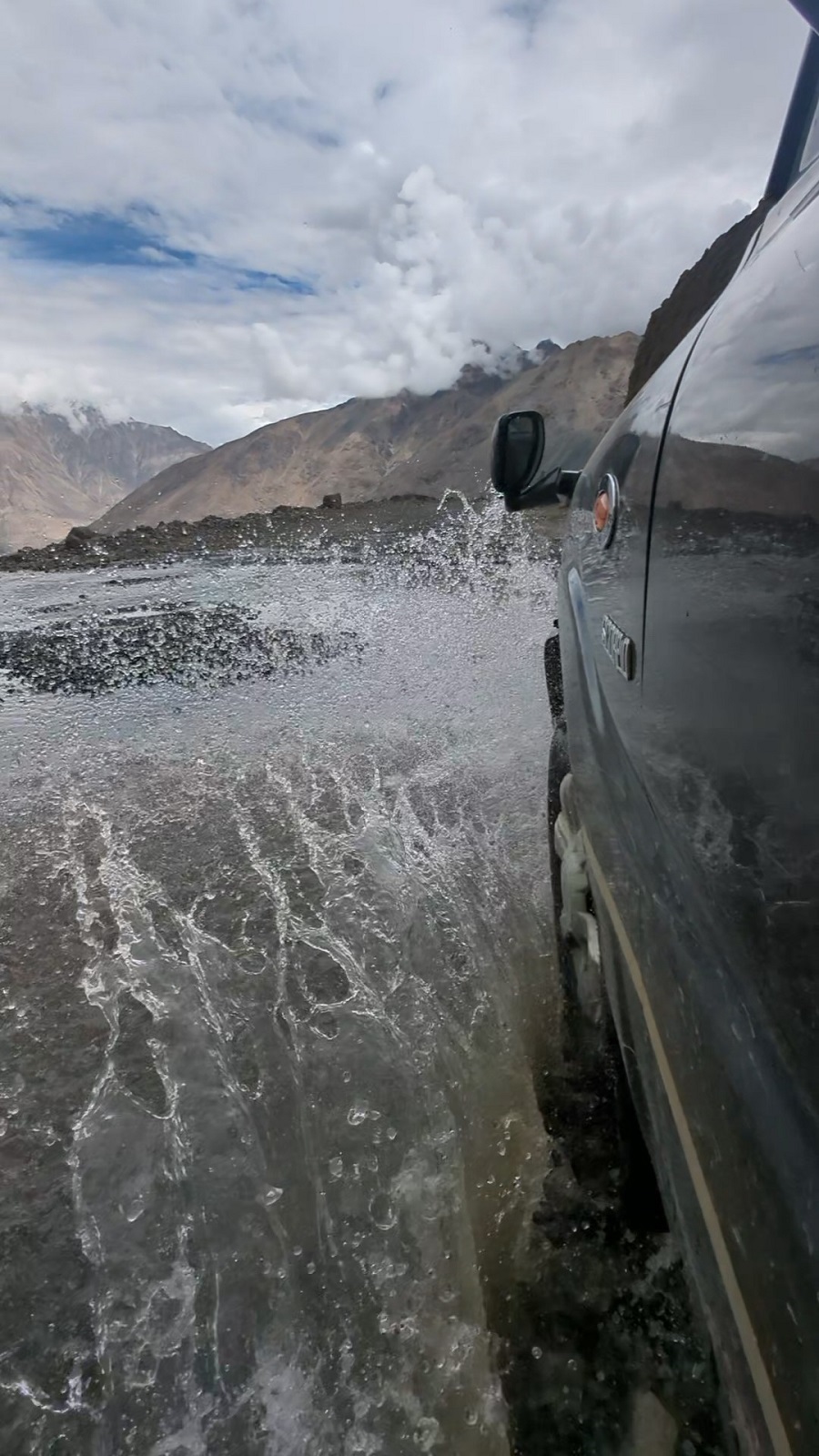

Before we had a chance to respond Ali bhai pressed the accelerator and off we went. To me it did not look possible. But 200 meters and 20 seconds later we had crossed the stream and were being cheered on by the passengers waiting on the other side of the stream. Ali, with his courage and driving skills lifted the spirits of all those around. Excited to tell the world about what had just happened, I again took out my phone to see “No Service” in the corner of the screen. We went a few kilometers ahead and noticed many cars turning around; the news of the blocked road had reached them; mind you, without digital or telephonic technology! Many drivers along the way waved at us to stop and give more information about the road. As we travelled the next few kilometers I felt like our Mahindra Scorpio was like the wave between towers, transmitting information from one region to another.
21 years ago, the Digital Empowerment Foundation was established to address information poverty in India by bridging the information gap; Digital happened to be the fastest and most efficient way to do it. Today as we transferred information from one village to the next I got a glimpse of how 50% of India who are on the wrong side of the Digital Divide receives and sends information. We stopped for breakfast at Diskit, a big village about 120 km before Leh. As I noticed the Innovas, Tempo Travellers, Trucks and Buses passing by as we had our breakfast, I couldn’t help but see them as waves of information between regions. One of those waves stopped us and said “Ali bhai, the bridge ahead is broken, there is no way to go” and Ali responded “the road this way is also in a bad state; looks like we will have to spend the night somewhere in the middle then.” And with that, the two waves of information went their ways.
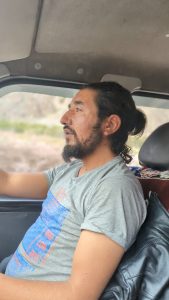 I once again opened my phone and I once again read “No Service” and looked at Ali who helplessly was looking at us, seeking our advice as to how we move forward. “We should just reach the bridge and see what is to be done,” said Saurabh, desperate to get network, even if not reach home. That was all that Ali needed. We continued and kept our hope alive. “We can cross the river by foot if it comes to that,” said Saurabh. Ali chimed in, “Yes, we will arrange a vehicle to pick you up on the other side.” He took a pause and then added “But to do that we need network.” All of us sat in silence; I wondered if the wish I made in the morning to stay in Ladakh for longer was too strong. Suddenly the beauty of the mountains became daunting. “It was just a whim that I felt in the morning” I told myself.
I once again opened my phone and I once again read “No Service” and looked at Ali who helplessly was looking at us, seeking our advice as to how we move forward. “We should just reach the bridge and see what is to be done,” said Saurabh, desperate to get network, even if not reach home. That was all that Ali needed. We continued and kept our hope alive. “We can cross the river by foot if it comes to that,” said Saurabh. Ali chimed in, “Yes, we will arrange a vehicle to pick you up on the other side.” He took a pause and then added “But to do that we need network.” All of us sat in silence; I wondered if the wish I made in the morning to stay in Ladakh for longer was too strong. Suddenly the beauty of the mountains became daunting. “It was just a whim that I felt in the morning” I told myself.
As we reached Khardung village, about 20 km before the famous Khardung La pass, the highest motorable road in the world, Ali stopped the car for a tea break. This time I didn’t need to check my phone, four different phones started receiving flurries of notifications; there was network in Khardung. I had missed a few calls, and had several messages on WhatsApp. I quickly informed them that I was in a bad network zone and will contact them properly when I have network. In the meantime Ali went and spoke to the dhaba owner and came back with a long face. He had a phone in his hand; “look at what has happened” he said as he showed videos and photographs of the broken bridge. The bridge was nowhere to be seen. “This is on a WhatsApp group of the villages around” he said. “Communication through WhatsApp! What a miracle for this morning that seemed to be a morning of the 1980s” I thought to myself. As I looked back at Saurabh, seeking his opinion on our next step I saw him deeply engrossed in his phone. “What?” he said after a few minutes. “What should we do?” I said. “Whatever you want. I have network now, I will sit here and respond to emails, you figure out what needs to be done next” and with that he went back to his phone.

This era has heightened our reliance on digital. Just 10 minutes back it felt like the end of the world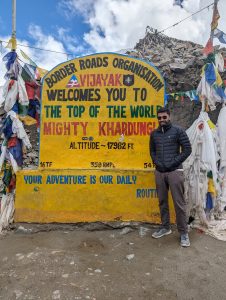 because we didn’t have connectivity. However, with reliable connectivity we were back in 2023. It didn’t matter that we were in Khardung; with a reliable network we were as good as in our office in Delhi. My mind wandered off, reflecting on the 50% of our country that is still unconnected. Digital technology affects the unconnected more than the connected. Having digital keeps us relevant, however, the lack of digital excludes the unconnected from all essential needs and services.
because we didn’t have connectivity. However, with reliable connectivity we were back in 2023. It didn’t matter that we were in Khardung; with a reliable network we were as good as in our office in Delhi. My mind wandered off, reflecting on the 50% of our country that is still unconnected. Digital technology affects the unconnected more than the connected. Having digital keeps us relevant, however, the lack of digital excludes the unconnected from all essential needs and services.
“Abner bhai! What should we do?” Ali brought me back. “Exactly what we have been doing. Not stopping” I responded. With an inspired smile on his face, he got behind the wheel and off we went, to cross the bridge that had become history. Sure enough, when we reached the bridge, there was another solution waiting for us. The army had made an alternate route ensuring safe passage for all civilians. We then made the climb to Khardung La and stopped to make sure we captured the moment for eternity. We reached Leh after a few hours and caught up on our emails and narrated the adventurous day we had to our families. As I reflected on the day I felt a sense of duty towards the mission that all of us at DEF work towards; eradicating information poverty and bridging the digital divide.
